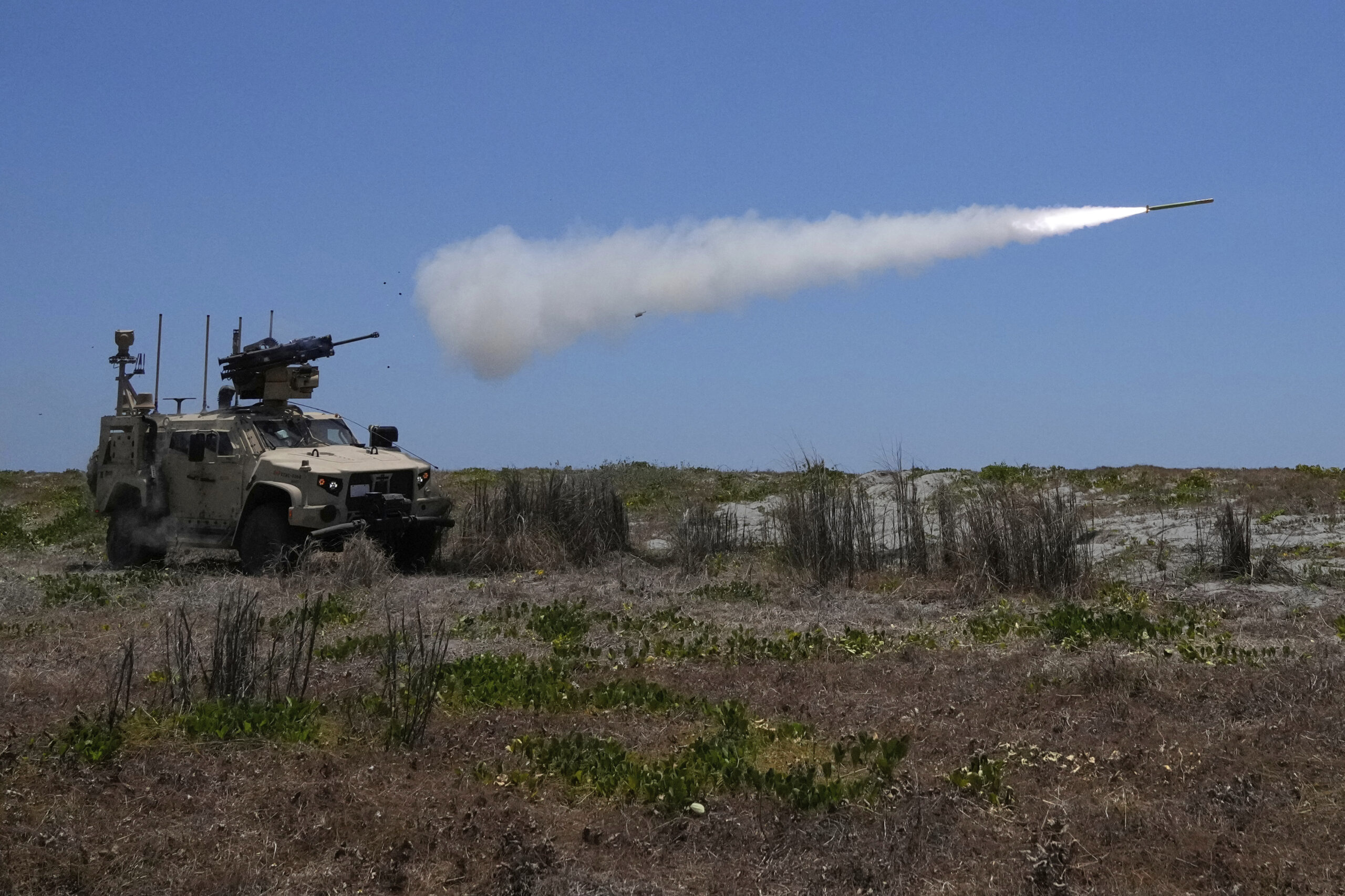US, PH discuss more missile system deployments

A US Marine Air Defense Integrated System, or MADIS, fires at a drone during a live-fire joint Philippines-US military exercise at the Philippine Navy training camp in San Antonio, Zambales province on April 27, 2025. — Photo by Associated Press
MANILA, Philippines — The United States is discussing the possible deployment of more missile launchers to the Philippines to strengthen deterrence against aggression in the disputed South China Sea and other Asian security hotspots, but no final decision has been reached by both sides, Manila’s ambassador to Washington said Thursday.
The US military delivered a mid-range missile system called the Typhon, a land-based weapon that can fire the Standard Missile-6 and the Tomahawk Land Attack Missile, to the northern Philippines as part of joint combat exercises in April last year. That was followed by the transport by the US military of an anti-ship missile launcher in April this year to the northernmost Philippine province of Batanes, just a sea border away from Taiwan.
Beijing strongly protested the installation of the US missile systems, saying they were aimed at containing China’s rise and warning that these would threaten regional stability. China has asked the Philippines to withdraw the missile launchers from its territory, but officials led by President Ferdinand Marcos Jr. had rejected the demand.
Ambassador Jose Manuel Romualdez said without elaborating that the possible deployment by the US of more Navy Marine Expeditionary Ship Interdiction System or NMESIS missile launchers “was being discussed for consideration by both sides.” The anti-ship missile systems could be installed along Philippine coastal regions facing the West Philippine Sea and outlying regions to beef up deterrence against aggression, he said.
“This is part of the strong US and Philippines defense partnership,” Romualdez told The Associated Press.
Romualdez spoke on the sidelines of a trade and investment conference in Manila, where he and Philippine Foreign Secretary Theresa Lazaro encouraged major US companies to invest in a wide array of industries — from energy and telecommunications to infrastructure and navy shipbuilding — in the Philippines, the oldest treaty ally of the US in Asia.
“When US companies invest here, it’s not just about returns on capital — it’s about returns on alliance,” Romualdez told US business executives at the conference. “A stronger Philippine economy means a more capable and reliable defense partner for the United States.”
“At a time when America is diversifying supply chains and rethinking global strategy, we are a natural choice – and a strategic necessity,” Romualdez said. “I ask you to carry this message to the Trump administration: `Every US dollar invested in the Philippines strengthens America’s position in the Indo-Pacific.’”
US Defense Secretary Pete Hegseth flew to Manila in March in his first visit to Asia and said the Trump administration would work with allies to ramp up deterrence against threats across the world, including China’s increasingly aggressive actions in the South China Sea.
The US was not gearing up for war, Hegseth said then, but underscored that peace would be won “through strength.”
READ: Marcos: PH buying more missiles from India, ‘but not for war’
China claims virtually the entire South China Sea. The Philippines, Vietnam, Malaysia, Brunei and Taiwan also have overlapping claims to the resource-rich and busy waters, but confrontations have spiked between Chinese and Philippine coast guard and naval forces in recent years.
On Wednesday, the US briefly deployed two warships in what it called a “freedom of navigation” operation off the disputed Scarborough Shoal in the West Philippine Sea where two Chinese navy and coast guard ships collided earlier in the week while trying to drive away a smaller Philippine coast guard vessel. The high-seas accident sparked alarm among Asian and Western countries.
“Freedom of navigation is essential for the trillions of dollars worth of commerce that passes through these waters,” US Ambassador to the Philippines MaryKay Carlson told reporters on the sidelines of the Manila investment conference. “It’s about commerce. It’s about lives and livelihoods.” /das
For comprehensive coverage, in-depth analysis, visit our special page for West Philippine Sea updates. Stay informed with articles, videos, and expert opinions.


















